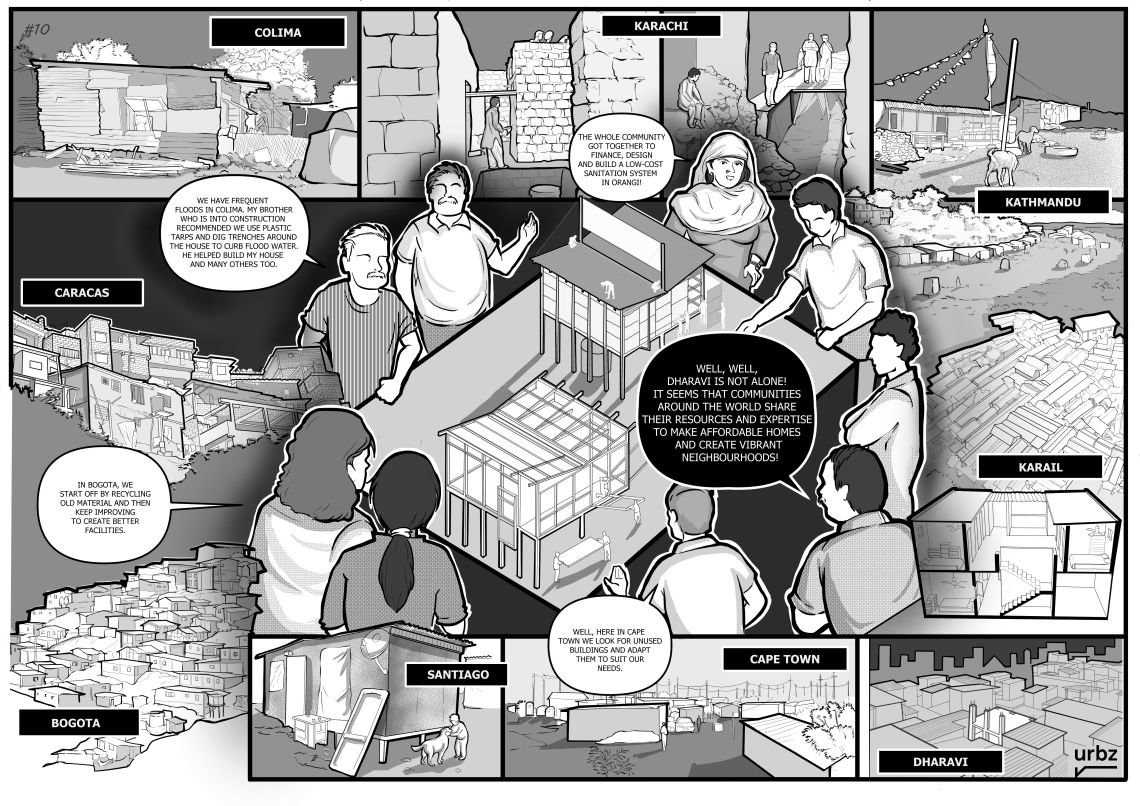Epilogue : Vibrant Neighborhoods

Epilogue : Vibrant Neighborhoods
Housing affordability in cities has become a major crisis across the globe. Places we call home are now a major component of global real-estate markets which exhibit societal inequalities. The crisis is a result of a combination of trends including migration resulting from urbanization, infrastructure deficits, and housing backlogs that coexist with stressed assets and vacant housing stock. An alternate form of housing has emerged in various neighborhoods across the world, where residents build homes based on occupancy rights and improve them over time.
Houses, neighborhoods, urban space, and the city itself are built by makers of these homegrown neighborhoods across the globe. Self-organized communities frequently band together to build dwellings on their own, viewing construction as a cultural collaborative effort. The construction of such neighborhoods gives the residents a sense of ownership and creates a collective memory within the community. Homegrown cities are an attempt to increase the number of affordable dwelling units by employing an alternative building and financing structure.
Large-scale endeavors in provisions of affordable housing are often driven by notions of what housing ought to be. These notions define a narrow formal set of standards as acceptable for housing and ignore the meaning and value of a home for homeowners. In Chile, people often choose to settle in campamentos(‘camps’) to fulfill ‘sueño de la Vivienda propia’ or dream of one’s own home. The enforcement of standards in the formal housing market prohibits self-building and takes away the opportunity for would-be homeowners to construct.
In the series, we use the phrase 'occupancy rights’’ to refer to the act of settlers inhabiting a particular land through collective action. Undefined in measures of area and density, accessing occupancy rights becomes an alternative to the process of formal housing which adheres to planned specifications and private ownership. The most vital parameter of housing i.e the satisfaction of homeowner needs is not quantifiable. There isn’t any congruence between the provision of materials in housing and the satisfaction of those who live in them. If then, we move away from material standards and quality - we can focus on the people for whom the housing exists. To look at self-built housing as an alternative, we need to distinguish between the materiality of things and what they do in people’s lives. For example, corrugated metal sheets are commonly used for roofing purposes, however, in Karail (Dhaka), they are also used as walls for self-built houses owing to their inexpensive, lightweight, and durable nature.
A characteristic property of homegrown cities is their ability to accommodate their makers, homeowners during the process of construction unlike in the case of formal housing projects. This series isn’t to romanticize the idea of self-built housing but rather to encourage rethinking housing by looking at residents as experts in their neighborhoods and their ability to self-build. The series on Vithal Bhaskar Chawl, Dharavi provides an insight into the participatory redevelopment of the chawl with the local contractors and how the residents' needs are met.
Housing action is dependent on the will of the homeowner, and in homegrown settlements, the actors are the residents themselves. While construction knowledge tends to be intuitive and is typically passed down through the generations within families, people of the neighborhood who work in the construction sector aid members of the community in the construction of homes. Social capital plays a big role in the ability to obtain materials, to build and gain access to utilities.
If we look at the homegrown neighborhoods across the world, we come across possibilities of what people can create and own in a culture that encourages auto construction. The provision of housing can no longer be addressed through a narrow lens defined by formal standards and building codes. So, for the makers of homegrown cities the building of a house is a continuing process which requires adaptability as well as innovation when faced with challenges. If we are to tackle how we house the rising urban population, we must look to self-built neighborhoods as a solution.
To download the PDF, click here

